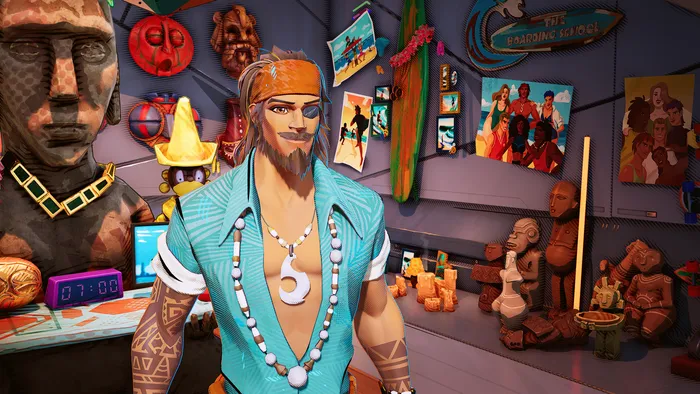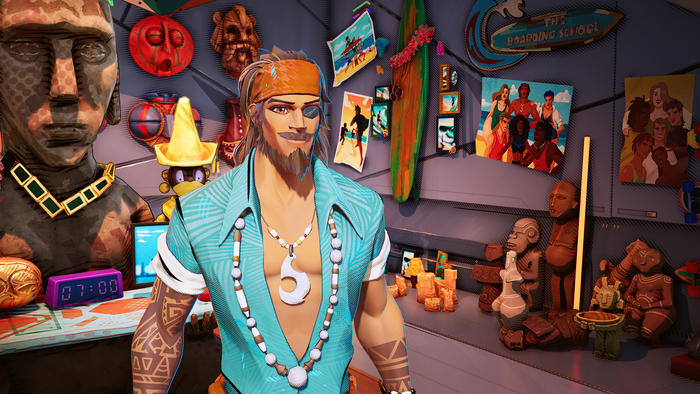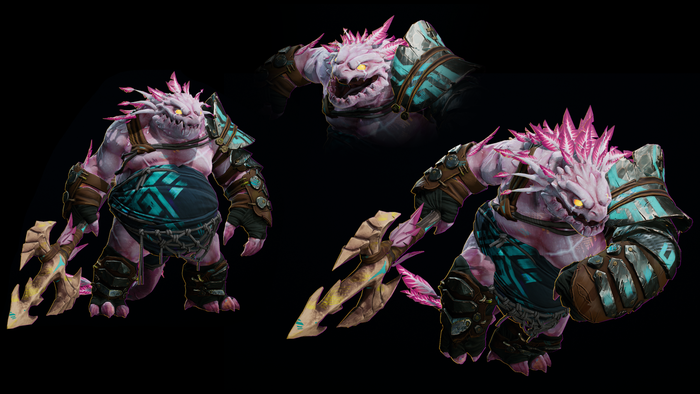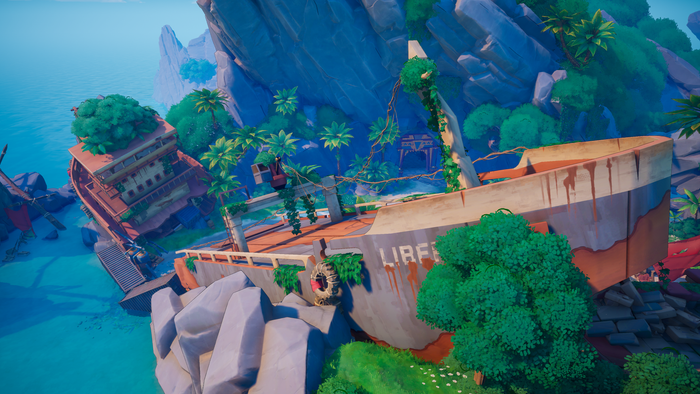
In multiplayer games, the narrative is the backbone of an immersive world, enhancing player experiences by providing a rich context that encourages exploration and teamwork. By integrating a dynamic narrative, this type of game can go beyond simply offering a competitive playground; it can also deepen a player’s connection with the game world – and each other.
Hello from MY.GAMES! In this article, Armando Troisi, Head of Narrative, Franchise at MY.GAMES, unravels the intricate process of integrating a narrative within the multiplayer gaming landscape, particularly seen through the lens of his work on HAWKED. We will explore the pivotal role of narrative in creating engaging, immersive worlds that captivate players and encourage exploration and collaboration.
First, question. Why is narrative important?
I get this one a lot. Well, what would chess be without “black” vs. “white,” “army” vs. “army?” What if we removed that iconic battlefield of squares? It would be abstract and probably difficult for most people to understand, at least at first.
But it’s the narrative design that makes chess easier to grasp. By wrapping the game in the context of “war,” we get understandable pieces, objectives, and mechanics. In many ways, the narrative design of chess helps players understand the game, even before they know the mechanics. This isn’t the only role narrative has in game development, but it’s the most common.
What are the features of narrative design in multiplayer games, and how do they differ from single-player games?
Well, single-player and multiplayer games both aim to engage the player emotionally while placing their actions into a logical context. That’s the job in a nutshell. While they might use similar tools to do this, it’s important to understand the strengths and weaknesses of each. For example, in most single-player games, you are the hero. Your actions set the story’s pace and direction. Multiplayer is on the other side of the spectrum. It’s about group dynamics. You might not be able to control the story’s pace or direction on your own and might need to work with others to accomplish that. Although single-player elements can exist in multiplayer, the experience is best when players collaborate to create stories through play.
How do you start the process of building a narrative for a multiplayer game?
There is no one way to begin, but generally, we tend to develop the world first, then the characters and storylines. Building a compelling and logical context is essential for social play. Players must have a common belief, idea, or fantasy to create a suspension of disbelief between them. This world-first approach is also useful for our live service ambitions. At the end of the day, spending time to build a compelling world is great for our players and us. It can satisfy the player’s need for purpose while providing a framework for us to continue building stories they want to experience.

Which tools were used to tell the evolving story of HAWKED?
It’s a big question! The team used a multi-layered approach that ranged from Marketing assets to in-game voiceover. But for me, making a playable lobby was a big win for players who want to experience an evolving story over seasons. Having the Riftwake as part of the main game loop allowed players to interact with some great characters between sessions and Issues. The team had a lot of fun writing for them, and we hope our fans will enjoy getting to know this quirky world through its cast.
What about in a session? How do you leverage narrative to motivate players to explore and engage with your world?
For us, narrative can be used to teach players different strategies, features, and progression paths. Simply put, it’s a tool to help make you a better player. To do this, the team collaborates closely with our game designers to ensure quests complement the game loop, objectives, sessional progression, encounters, and puzzles. They also provide great rewards. Everyone loves loot, right?
On the flip side, some players don’t want a story. How do you ensure they understand the world simply by playing game sessions?
The narrative team of HAWKED is led by a great writer and designer named Henry Kulick. He and his team collaborate closely with art, design, animation, and audio to ensure the story is everywhere if you choose to look for it.
In a multiplayer game, what takes precedence – extensive lore or a detailed story and which is more crucial for HAWKED?
For me, it is two sides of the same coin. World-building is an essential part of the process. The HAWKED team worked hard at crafting the world, rules, and features that laid the foundations for the future. But once the team understood what narrative it was all about and how it worked, the stories began to emerge naturally. It’s a great process to see unfold during development, and I couldn’t be prouder of what the team accomplished.
What narrative design techniques do you consider most effective for maintaining player interest over time?
Well, like any good treasure-hunting tale, a sense of mystery was critical to the story design. The team carefully planted seeds and posed more questions than answers during development. Unraveling these mysteries is already underway and will be used to expand the world in future Issues.
What is essential for creating compelling and memorable lore in a multiplayer game?
A good rule of thumb is, “If the lore does not explain the pixels in front of you, then it isn’t the right lore.” Aligning the lore and gameplay makes everything more memorable because it amplifies the player’s experience. Our weird writer math about this is 1+1=3. So, if the story and gameplay line up, the result is often more than the sum of its parts.

How did you devise the storyline for HAWKED, where artifacts from an ancient civilization, a treasure hunt, and a menacing corporation coexist?
Early on, the team knew they wanted to tell stories about anti-heroes rather than heroes. After all, our characters shoot and steal treasure from each other. Not exactly the altruistic types. We refer to our players as “Renegades” because that is who they are, not what we want them to be.
We also identified the need for a “big boss” to keep these misfits in line. Who better to rally rebellious treasure hunters than a for-profit preservation organization? We call this organization GRAIL, and its main goal is to collect powerful artifacts – for the benefit of humanity, of course.
However, for the team, the ancient civilization is the real secret sauce. As the storylines unfold, these lost peoples will act as a mirror to both the Renegades and GRAIL. As secrets are revealed and new enemies emerge, perhaps they will both question whether they are treasure hunting for the right reasons after all. But still, don’t call them heroes.
What are the key lore elements of HAWKED and their impact on gameplay?
Two big ideas are at the heart of the narrative. The island we call X-ISLE and Wonderium, a material with supernatural properties. Wonderium is a fantastic building block for our universe and a key component in producing Artifacts. Throughout the island’s history, these artifacts have played a significant role. The raw Wonderium that players can mine and the powerful Artifacts they can collect across the island are the most powerful prizes in the game.
What were your sources of inspiration for the game’s world and story?
Of course, classics like Indiana Jones served as early sources of inspiration, but our angle into the genre required us to look further afield. The team’s shared love of comic books, such as Hellboy and BPRD, influenced our development. This source material didn’t only impact our art style but also our characters and writing. For us, combining treasure-hunting with comics was an intriguing combination that resulted in our own take on the genre.

Could you describe your process for character creation?
We started the character creation process with a purpose in mind, namely, what benefit does it serve the player? Take the cast on the Riftwake, for example. Each character represents a system and serves the game’s design. After working this out, the team gave each cast member a specific voice and worldview. We asked each other questions like: “What would Indiana Jones be like if he didn’t believe anything belonged in a museum?” The end result is a group of misunderstood misfits who thrive outside the rules of society but have found a community together.
How do you gather and integrate player feedback regarding the game’s story and world?
Every day, our team collects feedback and evaluates future plans. The advantage of having a robust world to play in is that we are not dependent on a single story. We are flexible in approaching and designing each new issue in collaboration with our community. This world is theirs to play in – not ours. We try and keep that in mind as we develop our storylines and quests.
How do you intend to integrate new content and expansions into the existing lore without compromising its integrity and depth?
This world has a lot more in store than we’ve revealed so far, and the narrative team has done the heavy lifting to set up a rich universe full of possibilities. I’m confident HAWKED will continue producing stories for a long time.






